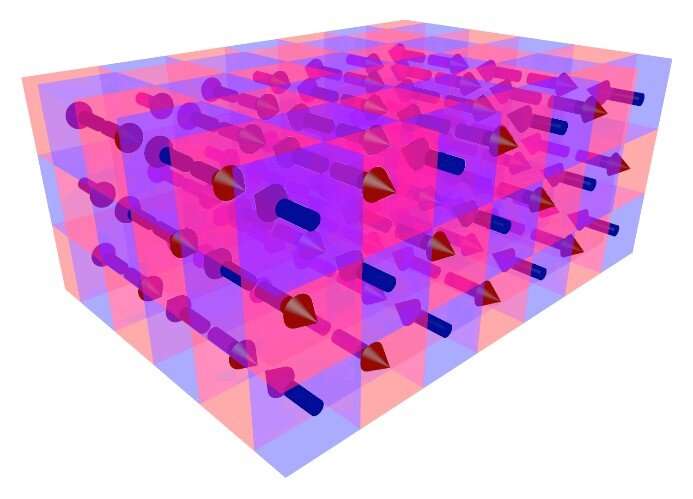Storing information in antiferromagnetic materials

Researchers at Mainz University have shown that information can be stored in antiferromagnetic materials and to measure the efficiency of the writing operation
People store increasing amounts of information, while end devices have become increasingly small. However, due to continuous technological improvement, conventional electronics based on silicon have reached physical limits, such as bit size or the number of electrons required to store information. Spintronics, and antiferromagnetic materials in particular, offers an alternative. In spintronics, information is stored not just in the charge of electrons, but in their spin and associated magnetic moment. In this way, twice as much information can be stored in the same amount of space. So far, however, it has been controversial whether it is even possible to store information electrically in antiferromagnetic materials.
Researchers at Johannes Gutenberg University Mainz (JGU), in collaboration with Tohoku University in Sendai in Japan, have now proven that it works: Dr. Lorenzo Baldrati, Marie Sklowdoska-Curie Fellow in Professor Mathias Kläui's group at JGU, says, "We were not only able to show that information storage in antiferromagnetic materials is fundamentally possible, but also to measure how efficiently information can be written electrically in insulating antiferromagnetic materials."
For their measurements, the researchers used the antiferromagnetic insulator cobalt oxide CoO, a model material that paves the way for future spintronics applications. The result: Currents are much more efficient than magnetic fields to manipulate antiferromagnetic materials. This discovery opens the way to applications ranging from smart cards that cannot be erased by external magnetic fields to ultrafast computers—thanks to the superior properties of antiferromagnets over ferromagnets. The research paper has recently been published in Physical Review Letters. In further steps, the researchers at JGU want to investigate how quickly information can be saved and how compact the information can be.
"Our longstanding collaboration with the leading university in the field of spintronics, Tohoku University, has generated another exciting piece of work," says Professor Mathias Kläui. "With the support of the German Exchange Service, the Graduate School of Excellence Materials Science in Mainz, and the German Research Foundation, we initiated a lively exchange between Mainz and Sendai, working with theory groups at the forefront of this topic. We have opportunities for first joint degrees between our universities, which is noticed by students. This is a next step in the formation of an international team of excellence in the burgeoning field of antiferromagnetic spintronics."
More information: Baldrati et al., Efficient Spin Torques in Antiferromagnetic CoO/Pt Quantified by Comparing Field- and Current-Induced Switching, Physical Review Letters (2020). DOI: 10.1103/PhysRevLett.125.077201
Journal information: Physical Review Letters
Provided by Universitaet Mainz




















